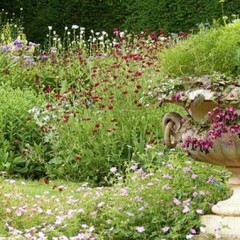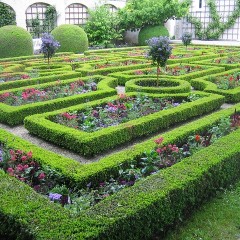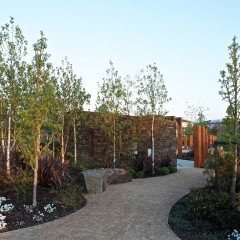5 Top Tips on How to Look after Your Outdoor Swimming Pool
When you live in a warm climate, such as here in Australia, you’ll soon appreciate the benefits of having a swimming pool in your backyard. At Best Home Ideas, we know that it’s great for relaxing at the end of a busy day and adds even more fun to an outdoor barbecue party. Also, if you have water-loving dogs, such as Cavoodles, they’d probably enjoy dipping in with you on warm summer days. However, there is the problem of regular maintenance to ensure your pool stays clean and usable. Here’s our rundown of the most essential tips you’ll need: 1. Using a Pool Skimmer This is one of the easiest maintenance chores. It aims to remove the leaves, twigs, flies and anything else that may be floating on the water’s surface. You can reduce the amount of debris by designing your garden with pool-friendly surroundings. To remove pool litter, take a long-handled pool skimmer with a wide net for greater coverage. Then simply work your way across the pool by skimming debris off the water. Empty it into a bucket then dispose of it in an area of your garden where it can’t directly blow back in. This task is best done daily or at least every time you’re about to dive in the pool. If you neglect floating debris, it eventually sinks to the floor of the pool. It then decays and can permanently stain the flooring. 2. Remove Algae An important part of pool maintenance is removing algae. The spores of these simple plants easily blow into the water. In sunlight, the warmth encourages them to multiply fast. They can appear in different colours such as red, brown or green and stick like glue to any hard surface in your pool. Swimming in algae-ridden water can be harmful and make you feel ill. Acoording to Ray Brosnan, the co-owner of Brosnan Property Solutions, a property maintenance company, the remedy is to use a truly good and quality pool brush once a week to dislodge them. Every area of the pool needs to be brushed, and it’s best done in the pool’s direction’s drain. Another helpful tip is to brush everywhere after chemical treatment to disperse them effectively. 3. Pool Vacuuming Regardless of how thorough your pool skimming technique becomes, debris will always find its way to the bottom of your swimming pool. The most effective way to remove it is with a pool vacuum. There are two versions to choose from. A hand-held pool vacuum is relatively inexpensive because you do all the work. It consists of an extending pole with a vacuum head at the end....
5 Reasons to Invest in a Pergola for Your Backyard
Want to take your backyard activities to a higher level? A new structure like a pergola in your backyard will not only give you a platform for various types of outdoor activities but also enhance the aesthetic of your property. Building a pergola can be a great way to turn your backyard into an attractive living space. Although building a pergola can be an expensive affair, it’s certainly worth it because of the many benefits that come with having one in your backyard. Nowadays, you can make one yourself or hire a professional designer to create one for you. If you decide to DIY the whole project, make sure that the material, structure and fabric are sturdy enough. In this article, we will take a closer look at those benefits so that you can decide whether it’s worth your time and money. 1. It Extends Living Space A pergola is a large structure and you can use it in many ways. It can add definition to your outdoor space, and you can enjoy many activities under it. The right types of pergolas keep the secure shelter in the outside areas, and whether you want to establish the pergolas in your garden or porch, you can surely experiment with how they extend the overall living area. 2. It Adds Beauty If you want to enhance the beauty of your garden, a pergola can be an attractive addition. Hundreds of designs are available out there and you can contact a pergola building agency to get some ideas on this. Homeowners often include accessories to make this construction more beautiful. You can add accessories like lights, hanging pots, curtains, carpet, fountains and many other things. Decorate the pergola according to your personality and lifestyle. And if you want to add more to your outdoor space, check out our article on the best curb appeal ideas suitable for any budget. 3. A Venue for Social Events Pergolas can be an ideal place to organise social events like weddings, birthdays, office parties, and more. If you have a pergola in your house, there is no need to rent one, saving you money in the years ahead. The right pergolas can be utilised during a festive occasion like a birthday party, a Christmas gathering or even during a weekend party. A pergola can also be a great spot for photo sessions, and it can make the moment more remarkable for you. If you have children, organising birthdays under a pergola can be a perfect idea. 4. Protection from Rain and Sunlight Don’t like the sun in the summer? A pergola can protect you from the...
11 Best Curb Appeal Ideas for Any Budget
Looking to boost the curb appeal of your home? Updating the exterior of your home is a great way to attract home-buyers to your property or to make something old feel brand new. Updating can come at a steep cost, but you can use the following ideas to freshen up your home without breaking your budget: Repaint your front door. A simple coat of paint can do wonders to refresh the look of your home. It’s an inexpensive way to quickly change the entranceway. Depending on your taste, you can choose a door colour that complements or contrasts with the exterior of your home. You can also add a wreath to the door, or change an outdated door handle to one that is more modern. Sod your lawn. Does your front lawn need a manicure? A dry and patchy lawn will detract potential buyers. People want to see luscious and green grass, not a brown and scrawny lawn. One way to instantly achieve the perfect lawn is to lay sod. There are many advantages of sod lawns. You won’t have to wait for the grass to grow, and you only need to refrain from walking on it for two weeks. A sodded lawn has dense grass that will require less water than a seeded one. Add garden lights to your front lawn and driveway. There’s no sense in updating your home if no one can see if. Add outdoor lighting so that your house is visible even at night. A dark property looks uninviting. Placing lights outside your house will make it look warm and welcoming. Plant a garden bed. A well-tended garden gives the impression that your property is taken care of. It’s one way to add colour without spending too much green. A few popular and affordable plants that you can add to your garden bed are azaleas, roses, annuals, and daylilies. Wash the exterior of your home. Over time, dirt and debris build up on the outside of a home. To allow the colours to shine, use a garden hose to spray the dirt right off the walls – just remember to be careful around the doors and windows. Clean your driveway. Having an unkempt driveway leaves the wrong impression on passersby. Although it’s convenient to place your garbage and recycling bin there, consider moving them to where they’re out of sight. To improve your driveway, clean up the areas that surround it, and park your car in the garage or where it’s out of sight. That way, nothing impedes the view of your home. Repaint the exterior of your home. Does the paint job of...
Designing A Garden Around A Feature Element
The process of landscape design, like architectural design or urban planning, generally works by getting the big picture things worked out first (like overall spatial composition) and then focussing on the small stuff. You might decide, however, to throw caution to the wind and ask your landscape architect to design your garden the other way – by framing the space around a particular piece or pieces of garden furniture or garden art. These might by objects that have jumped out at you whilst window shopping, existing elements in your garden that you’ve always loved or something with sentimental value. Going hunting for interesting, unique or just affordable furniture or other feature elements for the grounds of your property can be a very useful way to begin a design project. It can be very informative for your designer, as you will be providing an insight into your taste and your ideas for your garden. It will then be your landscape architect’s job to work out how best to make these components fit into your new or modified garden. One of the best aspects of the selection of structural garden features before finalising or even drafting the layout and specifics of a garden is that you get to design ‘outwards’ from those objects. Careful attention can be paid to the scale and composition of zones adjoining the feature elements, making sure that the spaces and components around them are tailored to suit the objects – rather than ‘retrofitting’ an object into a generic paved, pebbled or lawned area. In architectural terms, it’s the equivalent of a client falling in love with a particular oven and asking their architect to design their kitchen around that. It may seem sort of back to front, but it does make sense – for landscape as much as for architecture and interior design. I recently worked on a small back courtyard project for a property in Canberra. The subject area faced south and received very little sun during winter. The owner was keen to redo this courtyard – to improve the aesthetics of the town house’s surrounds and to provide a new passive recreation space for the warmer months. By chance, the owner happened upon a neat little bench seat which they liked and which they thought would be suitable visually and for utilitarian reasons in the courtyard. We decided to use that piece of furniture as one of the key determinants in the garden’s layout, taking into account its shape, size, colour and aesthetics. So, a series of concept sketches were prepared for the courtyard, with the subject bench seat in different spots and orientations....
Design Ideas For Big Residential Gardens
If the grounds of your house are large and you have sprawling areas of lawn and pavement, you might like to consider dividing up the garden into a series of ‘rooms’. Whilst this concept runs rather counter to the idea of being able to show off the size of a property in one glance, the creation of intentionally-framed spaces within your garden will make the visual and physical experience of the garden a much more interesting one. Consider your garden as you would when planning a new home. Even if the layout of your house is essentially open-plan, there will still be some divisions to separate recreation areas from utilitarian ones and walls or objects which break up the ground plane of the home. The idea of garden rooms is by no means new. Ancient Roman villas often contained peristylium (or columned internal garden courtyards), an atrium and enclosed garden zones adjoining the villa for orchards. Medieval garden imagery is also laden with the concept of garden rooms, of seclusion and contemplation. The complex of the Palacio de Generalife (Granada, in Spain), originally began in the early C14th, consists of various garden rooms, albeit very large ones – the water-garden courtyard and the courtyard of the Cypress amongst them. Even if your garden spaces aren’t as large as those of a medieval castle or a Moorish palace, the principles that were employed in the creation of the gardens on such grand sites can be used in standard residential situations. Landscape appreciation lies partly in a place being an unfolding story. The most interesting man-made landscapes are often those where the viewer is not ‘blinded’ by the full extent of the site in one hit. Creating a sense of anticipation in landscape spaces is as important as it is in building design. In the preparation of a design, a landscape architect will often provide glimpse views of a whole site but not disclose every aspect of the place from a single point. In your garden, don’t be afraid to experiment with division of spaces and the concept of gradual revealing – especially if you have a large property. Gardens are wonderful when they are developed to be sequential experiences. Good examples of ‘the slow reveal’ can be seen in some of the grand British estates developed in the C18th – like Stourhead. In a standard residential situation, there are many types of elements than can assist in the development of garden rooms – hedges, small feature trees, privacy screens, ha-ha walls (which support changes of level), stairs, garden art, lighting and changes of surface material being just a few. For...
Bring a Touch of The Chelsea Flower Show to Your Garden
Nine-time ChelseaFlower Show veteran and winner of Australia’s only ‘best in show’ medal in the historic event’s 100 year history, Wes Fleming knows a thing or two about creating show-stopping gardens. From dramatic plunge-pools and outdoor bathtubs to relaxed outdoor dining and sculptural outdoor art, new landscaping and design trends are formed at Chelsea. So how can you recreate a touch of Chelsea in your garden at home? Wes Fleming reveals his top tips to inject a Chelsea feel into your outdoor space… “Plonk Gardening” – don’t overthink the location of plants too much and don’t be afraid to mix and match within a garden bed. Rather than strive for perfection and symmetry, for a more natural look simply ‘plonk’ plants down in the garden bed still in their pots and stand back – if it looks good, then plant. Use a mix of evergreen, flowering, autumn colour and feature trees to create a stunning array of texture and colour that will change with the weather and take on a different character with each turn of the season. Reserve a good budget for planting – the plants will pay you back in spades as they mature and in turn increase the value of your home. Use colour to layer – use deep purple foliage as a backdrop, fading to brighter tones and silver foliage plants as the top layer of planting. Use low growing and spreading plants as ground cover, rather than mulch or bark. This will create a more full-bodied garden with lots of different plants, colours and textures. Create interest and structure to your garden with a touch of ‘hard’ landscaping –wooden beams or decorative screening make for a dramatic addition to any garden and help balance the ‘soft’ and ‘hard’ landscaping elements. Be creative with exterior lighting. Accentuating mature trees or feature points in the garden with up-lighting can look incredible at night and ensure your garden is a focal point both day and...

















